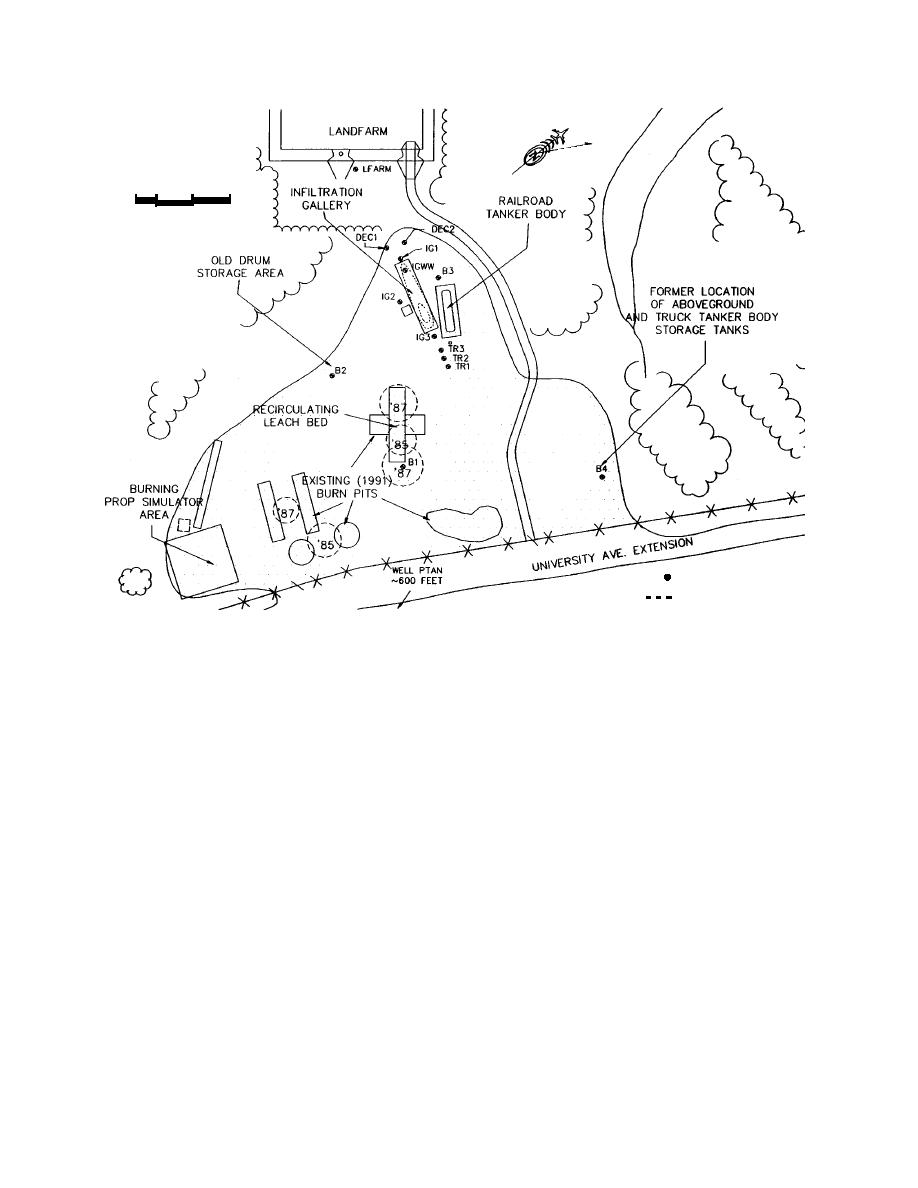
29
.
EC
MAG. D
100
25
0
50
SCALE 1" = 100'
WELL LOCATION
FORMER BURN PIT
LOCATION AND SCALE ARE APPROXIMATE
c. Fairbanks International Airport CFR training site.
Figure 1 (cont'd).
pad and flooded with water and a layer of fuel
ing facility. Specifics have been previously docu-
oil, which was then ignited to serve as a demon-
mented (Walker and Travis 1990, Braley 1991,
stration fire. Following training, fuel remaining
Braley 1993, Reynolds 1993, Reynolds et al. 1994).
in the pits was reignited and permitted to burn.
Figure 1 shows the locations of Fairbanks, FIA,
This process allowed unburned fuel to contami-
and the site of the CFR training facility. FIA is
nate the soil and groundwater aquifer. Addition-
located 3.5 miles (5.6 km) southwest of Fairbanks,
Alaska, at latitude 6449'N. The mean annual air
ally, training included extinguishing burning-
temperature is 26F (3.3C). The mean annual
prop simulations, which are several fuel nozzles
spraying ignited oil above the ground.
precipitation at FIA is 11.2 in. (28.5 cm), of which
Above-ground fuel storage tanks, two truck-
approximately half is snowfall that persists on
tanker bodies, and 55-gal. (208-L) drums, which
the ground for 5 to 7 months of the year. The site
is bounded by the Chena River, Tanana River,
contained paint and asphalt products, also were
located at the site. The two tanker bodies and
and drainage sloughs.
approximately 500 gal (1900 L) of fuel that leaked
from one of the tanker bodies was removed from
Site history
the site during 1990. An 18,000-gal (68,130-L)
The CFR facility was used for many years to
railroad tanker body, located at the site within a
train personnel from FIA, government agencies,
and private firms in fire fighting and rescue tech-
gravel-berm containment dike, released between
niques appropriate for aircraft disaster. Shallow,
6000 and 10,000 gal (23,000 and 38,000 L) of fuel
during May or June 1990 (Fig. 1c).
unlined burn pits were constructed on the gravel
3





 Previous Page
Previous Page
